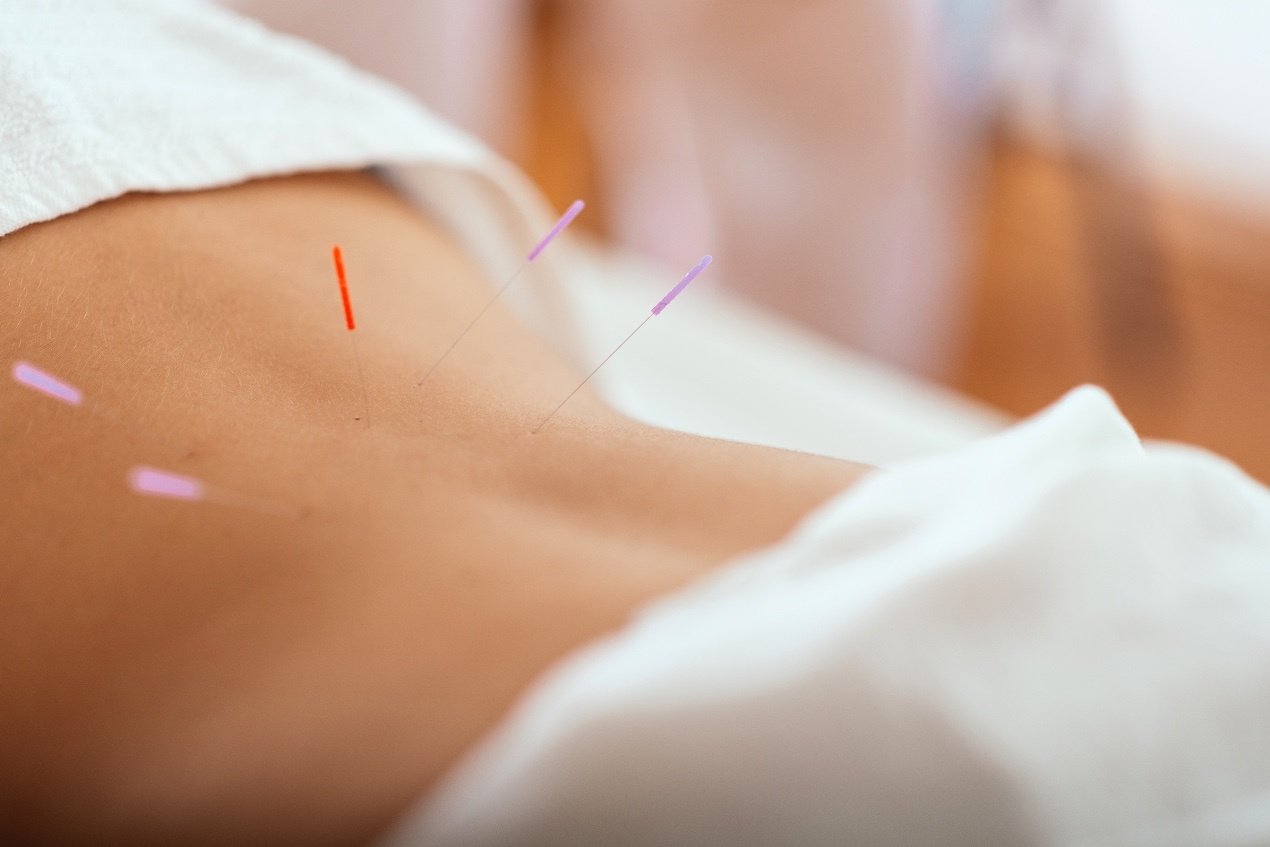Acupuncture and Home Remedies for Hip Pain and Sciatica
First off, if you're suffering from sciatica, you have my sincere condolences. You may even feel pain radiating to your thigh, groin, leg, or even into your heel.
Unfortunately, sciatica can sometimes get worse with activity and reduce your range of motion. Sometimes this pain can become persistent and unbearable.
Acupuncture reduces the pain by redirecting the circulation pattern and nerve response to your hip.
The acupuncture needles are super-tiny. You may barely feel them going in.
You'll feel improvements in your pain area within minutes of the acupuncture session.
It's not that we're "tricking" the body into not having pain, we're simply improving the circulation pattern. This includes the circulation of blood, Qi ("energy"), and nerves.
However, if we don't address the underlying cause of the problem, it will return.
For most people with chronic hip pain or sciatica, the underlying cause is lack of gluteus medius activation. (Read: "weak butt muscles.")


What You Can Do to Heal Your Sciatic or Hip Pain
Controversial belief: Sitting doesn't necessarily have to be bad for your health!
It's not bad if you're sitting with good posture.
Step 1: make sure you're not sitting on your tailbone. Your behind should be behind you. For tight hips: use a cushion or small towel pushed toward the back of your chair to help roll your hips forward.
Sitting Posture Pointers:
FEET: they should touch the ground comfortably. If not, use a stool. Activating your feet while sitting (and walking...) helps prevent foot problems like bunions, fallen arches, and plantar fasciitis. It's the root of the external rotation you need for your hips.
HIPS AND KNEES: Your knees and hips will then externally rotate (right hip goes to the right, left one to the left). It is not very lady-like, but don’t worry about that for now. We first need to create a good foundation of open hips and pelvis. When your hips are more flexible, then you can cross your legs and still keep a good foundation.
PELVIS: Don't sit on your tail!
There’s a disc in your lower back between L5 and S1 shaped like a wedge. When you tuck your tailbone, this wedge becomes compressed. This can lead to bulging or herniation in the discs, or pressure on the sciatic nerve.
"RIB ANCHORING" (coined from the Gokhale Method of posture science): To avoid lordosis (over-arching in your back) or slumping, we need to anchor your ribs. This is basic core/abdominal engagement.
The best way to do this is to place your hands on the front of your lower ribs, just under the chest. Now allow yourself to slightly fold over your hands. This will cause a feeling of relaxation to spread into your back if done correctly.
SPINE: From here, I’m going to stack up straight. The straight stacking is done with your ribs anchored.
When I say "straight spine," you don't necessarily need to be upright. For example, you can lean forward with a straight back. And, please, if you're going to lean forward (picking things up, working on a laptop, or forward bending in yoga class), keep your back straight! Hint: it helps if you bend your knees generously and activate the posterior chain from your feet up to your butt muscles/glutes.
SHOULDERS: One at a time, rotate your shoulder a little bit forward, then a little up, and then a lot down and back. This will open the chest and create room to breathe deeply. When you’re working, focus on keeping this feeling in your shoulders. Resist the temptation to curve your shoulders forward when you’re working. Lean forward with a straight back, keeping your shoulders down and back, chest open.
NECK: Your neck should be straight and long like a straight extension from the rest of your spine. If you look at a properly aligned neck from the side, there is a slight downward angle from the middle of the ear to the tip of the nose. You may even use your fingers to push your chin in. Avoid “tech neck” where you jut your chin out. Angle your computer screen or work to where you look straight out or even slightly down.
BREATHING
The most important part – you want to be able to do this and breathe at the same time.
Read more about sitting posture here.




